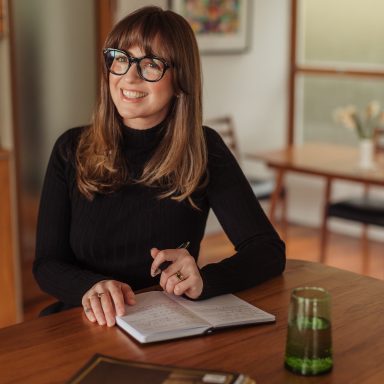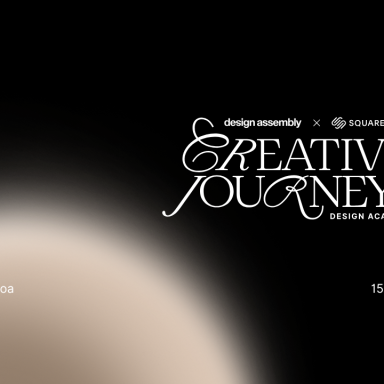5 minutes with… Shane Goodwin, Head of Experience Design at Jade
Ahead of our upcoming Christchurch DA Event: Autumn Conversations – Design & Accessibility we spoke with Shane Goodwin, Head of Experience Design at Jade. Shane has been sketching, imagining, developing, breaking, and making products for the last 18 years, with the last 11 as a UX designer. Before that he has been a product manager, a software developer and a street juggler. With a bent towards the invisible components of a design, Shane has worked on physical and digital products from mobility, medical imaging, and ecommerce through to finance, energy and insurance. His passion is people and how technology can benefit people – from the beginning through to the end, first and foremost.
As part of his work at Jade, Shane recently had a chance to return to his roots in medical mobility and be part of the team building the world’s first touchscreen controller for motorised wheelchairs. At our CHCH conversations event Shane will be sharing the story of how much accessibility matters when a persons impairment mean they struggle to move their heads let alone their hands, and how this is no different for designing for the general population.

What is your background and how did you get into user experience design?
I often call myself a recovering engineer – I studied Information Engineering at Massey University, which is a cross between computer science, software engineering, and business/industry topics. I was a software developer and architect before becoming a product manager, and then moving into UX design. Each step in my career has really been about getting closer to the user: first I was working on building the thing, then I was working on the business side of building the thing, and now I’m focused on what people using the thing want and actually need from it. Saying that, I’ve found having wandered the path I have allows me to communicate well with all the different people involved in making a product a reality.
What was the biggest risk you have taken in your career-to-date?
Probably the move into UX as a discipline, because there it was really only just starting to become something that businesses understood and talked about at the time. Another risk, which is related because I took them both at the same time in my career was designing a product that was actually a camera, but ergonomically looked nothing like a camera or operated like a camera. This was huge risk for market acceptance, because everybody thought about the tools in the area as being cameras, looking like cameras and working like cameras. But it worked out well – the design cues we included in both the physical and digital design meant that people “naturally” found it usable and accessible. A traditional camera type approach didn’t really work, as our competitors at the time were very helpful in proving

Do you have a project that is memorable because it challenged you but that you ended up loving and being really proud of? If so what lessons did you learn from that project.
Actually, that same not-quite-a-camera project. It’s memorable to me specifically because we did take calculated, tested risks with the design and market throughout the process, because I was working on the all the physical and digital aspects of it, and because it was the first project and team that I lead from concept to launch and into further iterations. The challenge was balancing all the different aspects, drivers and demands. I learnt that you need a team and that you need to trust the team – you can’t do everything and that better things can come from letting go.

How might we undertake design in a way that embraces the full spectrum of human experience?
I think the most sustainable and sneakrectly effective way to include accessibility is to encourage and embrace diversity in user testing and also within our teams – especially in the design team, but also the development and business teams as well. Especially because my current role is in a services and consultancy business where we don’t control the priorities for a design, the client does, then by just having accessibility concerns a part of who we are and what we do and not asking if we can include it is the simplest way to be inclusive of people.
What should every designer know about Human (or user) centered design?
That you are not your user, that you never will be, and that you don’t own the answers – only the questions, and a process that we can use to find the answers. Even if you’re the exact right demographic, with the right needs and most likely to buy and use whatever you’re working on, exactly because your job is to overthink all the aspects of what you’re designing, you’re not the user. It’s so easy to forget this and just make assumptions about what the answer is, especially when you’re under time pressures or have stakeholders saying “But aren’t you the expert?!”

What advice do you have for designers getting started with UX?
Leave your ego at the door and just do it, but don’t think that it’s going to be easy. You need to get your work in front of both peers and users, accepting whatever they say as right and learning from it rather than defending against it. The willingness to do this, and to keep doing it while still keeping an open, enquiring mind as your darling design is being torn asunder iteration after iteration is the biggest unexpected thing about in the job, and also one of the hardest.
Do you have a dream project or collaboration you aspire to?
I would have to say something in AR and/or VR, and if it’s going to be a collaboration in that space then it would have to be with Valve Software, just because of the way they work and how they think and that as a games company, they’ve been thinking for years in how interfaces like this might actually operate. I think as a field AR and VR is a still a green field of how people can interact and use the technology, and what works and what doesn’t in the medium is still in the very early days – in the very limited work and experience I’ve got to date in it, even our most basic ideas from digital design and the design process just don’t translate. It’d be exciting to be trying, failing and hopefully trailblazing in this kind of space.




